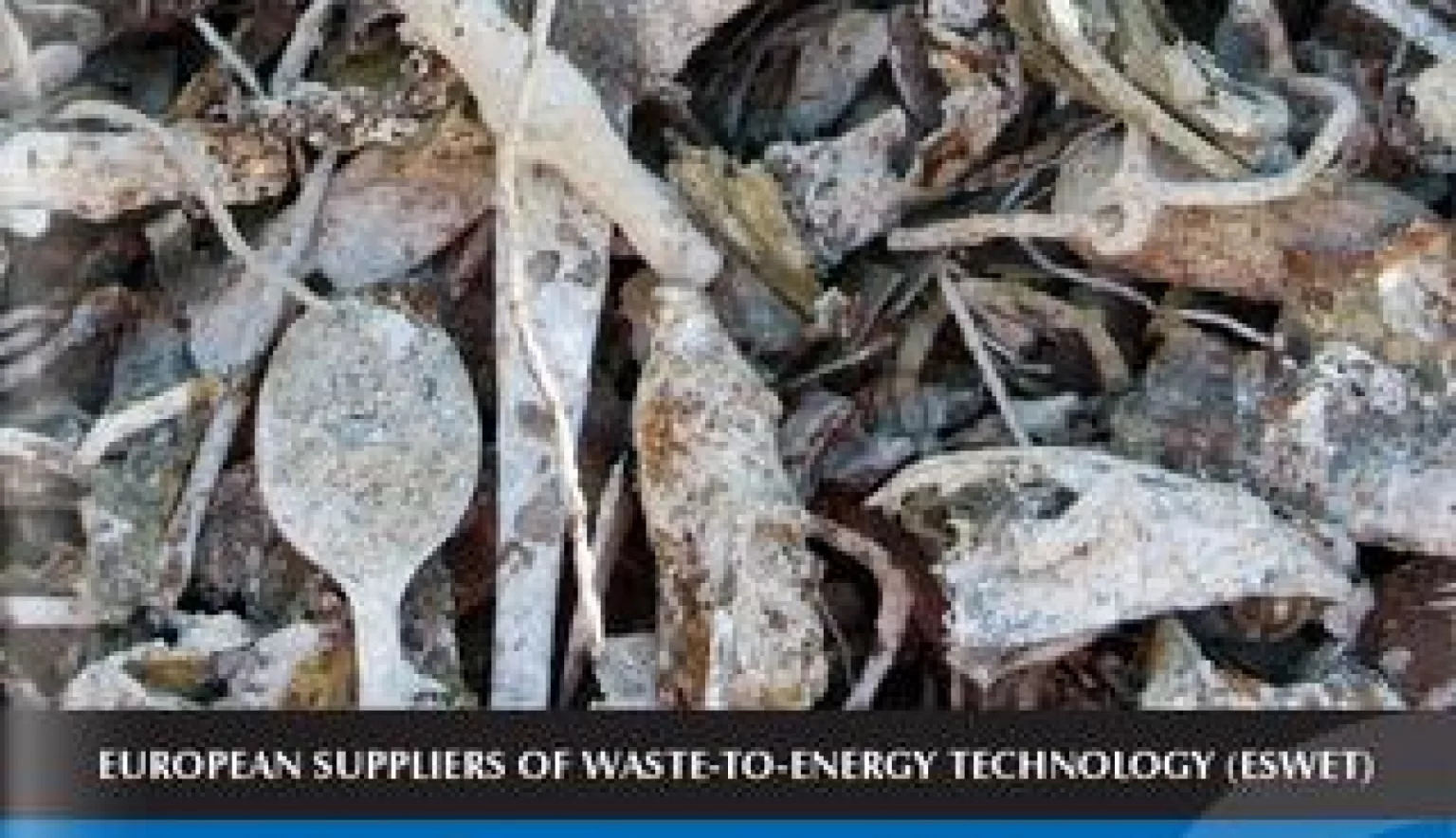We talk with Diana Baganz about The European Suppliers of Waste to Energy Technology (ESWET) and how its importance has grown since it first became active in 2004.
Q&A WITH DIANA BAGANZ
Could you firstly introduce me to The European Suppliers of Waste to Energy Technology (ESWET); a brief history of the Association and how it has evolved over the years?
Diana Baganz (DB): ESWET has been active since 2004 on the European scene and has stepped-up its presence from 2008 onwards, when the vote on the EU’s Waste Framework Directive – defining the role of Waste-to-Energy (WtE) within the Waste Hierarchy – took place. It has since followed many policy topics discussed at EU level, mainly on energy, climate and air quality, along with promoting Waste-to-Energy as the solution for unrecyclable waste. We are not a large association, but we do catch the eye of high profile officials in Brussels!
What are the core activities and goals of the Association, and how have these developed over the years?
DB: Even if everyone generates it, waste is not a very attractive topic. But it is a hot one! ESWET has been active on the Brussels scene to bring better understanding of the facts of Waste-to-Energy technology, as decision-making should be done only based on facts.
Waste-to-Energy is indispensable for sustainable waste management in the perspective of a circular economy. As the voice of the European technology suppliers, the interest is to develop Waste-to-Energy beyond the countries where it has already been successfully implemented and where landfilling has been minimised.
Many countries in Europe are still barely recycling anything and landfilling all the rest, which must change if the EU is truly committed to becoming a source of inspiration to the rest of the world when it comes to climate and energy issues. Waste-to-Energy is part of this solution. This is why we are glad to see the steady increase of Waste-to-Energy in countries where it was not present before, such as Ireland or the Baltic countries.
How expansive is ESWET’s influence within Europe at present and how has this influence grown since the Association began?
DB: When ESWET was founded, there was no specific voice for the suppliers of Waste-to-Energy, although other stakeholders were already promoting the general sector. We had to establish a strong network within the EU institutions and collaborate with other stakeholders in Brussels to create the right framework for the technology; which we continue to do up to this day.
With its members being technical experts and its Secretariat focused on public affairs, ESWET is a complementary voice to other waste management associations, delving deeper into technology and supplier-specific topics. For instance, ESWET took the lead in the Climate Correction Factor for the R1 Formula, a technical dossier to assess climatic conditions from various EU locations and the impact these would have on the demand for the energy produced by WtE plants. Working with the European Commission, ESWET’s technical expertise has served as the basis for EU legislation.
What is the Association’s strategy when it comes to expanding this influence and how does ESWET go about reaching new countries and new audiences?
DB: Brussels is an amazing platform! There are specialists on every topic from every country meeting regularly in Brussels. Being active in the “Euro bubble” is helpful to identify trends and meet people from locations that are likely to become interested in Waste-to-Energy, and this is the Secretariat’s realm.
When it comes to the work “on the ground” in the various EU countries, this is done by the member companies, focusing on those places where Waste-to-Energy would fit well within the energy and environment aspirations of the region. The Secretariat also travels regularly to explain the EU legislation and why it would make sense to move to better waste management practices; opening the way for Waste-to-Energy projects.
What do these Waste-to-Energy technologies consist of and what they can achieve?
DB: Simply put, Waste-to-Energy plants are large furnaces to burn waste. A grate is used to make this combustion occur as efficiently as possible, and to ensure that all of what can burn, will do so. Such combustion systems are reliable, durable, and capable of working 24-seven as residual waste is also generated on a continuous basis. Other technologies exist, but their applicability on industrial scale for residual (and thus heterogeneous) municipal waste still needs to be demonstrated with the same reliability.
Two things are then very important:
The type of waste everyone produces every day contains a variety of substances which can be harmful for the environment. Left untreated and landfilled, they could leach out of the landfill into the ground (water) or the air and cause all kinds of health and environmental problems. This is why Waste-to-Energy is much safer since it includes a thorough cleaning of the combustion gases. ESWET members are experts in designing, installing and improving various types of flue gas cleaning systems ensuring that harmful substances are destroyed and/or safely removed from the eco-cycle.
Another important aspect is that waste contains a tremendous amount of energy. This energy would be buried in a landfill if it was not recovered in Waste-to-Energy plants. Recovering energy from waste enables us to reduce our reliance on other sources, such as fossil fuels and their associated impacts. The electricity and heat production of these plants is also steady, which is useful in a system which increasingly relies on fluctuating and intermittent energy sources.
What do we save? The energy contained in all waste treated in EU Waste-to-Energy plants in 2012 was equivalent to 19 percent of the gas we imported from Russia. Waste-to-Energy helps replacing fossil fuel imports with local, partly renewable and affordable energy.
How much of what you do revolves around education and marketing to convince these companies that a more well-rounded solution is required?
DB: The ESWET members are part of the solution to reduce greenhouse gas emissions. Technologies developed by the members are key to fighting climate change through better waste management. Every landfill closed makes way for recycling and Waste-to-Energy, reducing pressure on the global climate.
With waste problems also bound to grow in emerging countries, a rapid spread of Waste-to-Energy can help avoiding emissions from waste management in these thriving economies. ESWET member companies are up for the challenge wherever plants are demanded; for example in Eastern Europe, China, the Americas, the Middle East and Africa. European companies need to be competitive abroad, because waste is a global problem and not to be left to chance.
In regards to ESWET’s member companies, how are these affiliations initially established and what benefits have these companies brought to the overall success of the Association?
DB: This is a very specific technology and therefore a small world! membership in ESWET has grown from the five founding members to 19 members as of today. These companies have built and supplied 95 percent of the Waste-to-Energy plants operating in Europe and, through licences and agreements, the majority of those worldwide. Important for today’s 19 members is to have a clear view of the EU technical requirements – under revision – for WtE plants. Also crucial is shaping an EU legal framework that continues to push for the application of the EU Waste Hierarchy, optimising recycling, followed by WtE (recovery) and only as a last resort, landfilling (disposal).
How do you foresee ESWET progressing and developing over the coming months and years in regards to its footprint and level of influence on the continent?
DB: Despite – or maybe because of – the economic crisis, interest in Waste-to-Energy has not waned. Driven by legislation, it also takes citizens’ support for environmentally-friendly residual waste management, which is far from being self-evident. Local opposition often sprouts when an “incinerator” is proposed in regions with no plants and therefore no prior knowledge, while it is well accepted in regions with existing WtE plants; for example, in Vienna the plants are in the city centre, allowing for maximum energy recovery.
Waste-to-Energy plants are designed to valorise unrecyclable waste, which will still exist in Europe for a long time, whether we like it or not. It is also important to emphasise that the plants are clean and safe and that they bring significant energy benefits while substantially reducing the amount of waste sent to landfills.
ESWET therefore has a lot of work to do to explain to decision-makers that Waste-to-Energy is necessary and beneficial. Reaching these decision-makers is already done through a variety of means, and we want to further engage with them on a factual basis through media actions, for instance. Start spreading the news!
How do you see the general standard of emission reduction and Waste-to-Energy improving in the future, and what more do you feel needs to be done to reach future goals?
DB: Use of the technology to reach minimal levels of polluting emissions has already been generalised to all EU plants. For example, despite often being associated with dioxin emissions, less than two percent comes from WtE plants.
There is also still some margin to retrieve even more heat from the existing plants through the building of district heating networks, but this requires a centralised location of the plant as currently already happens in Scandinavia.
The key to all of this lies with the citizens. They should not allow their waste to be landfilled or exported for sham recovery. They should demand that it is recycled first and thermally treated second near their backyards – opposite to the common “not in my backyard” phenomenon – to serve as a constant reminder of the burden they produce every day.
Let there be no question: waste should be reduced, reused and recycled. But with regards to the residual waste, let’s turn it into an opportunity for jobs and affordable, locally-sourced, clean energy. The technology is available; all it needs is willingness from the citizens. Don’t wait for your landfills to overflow, act now!
















